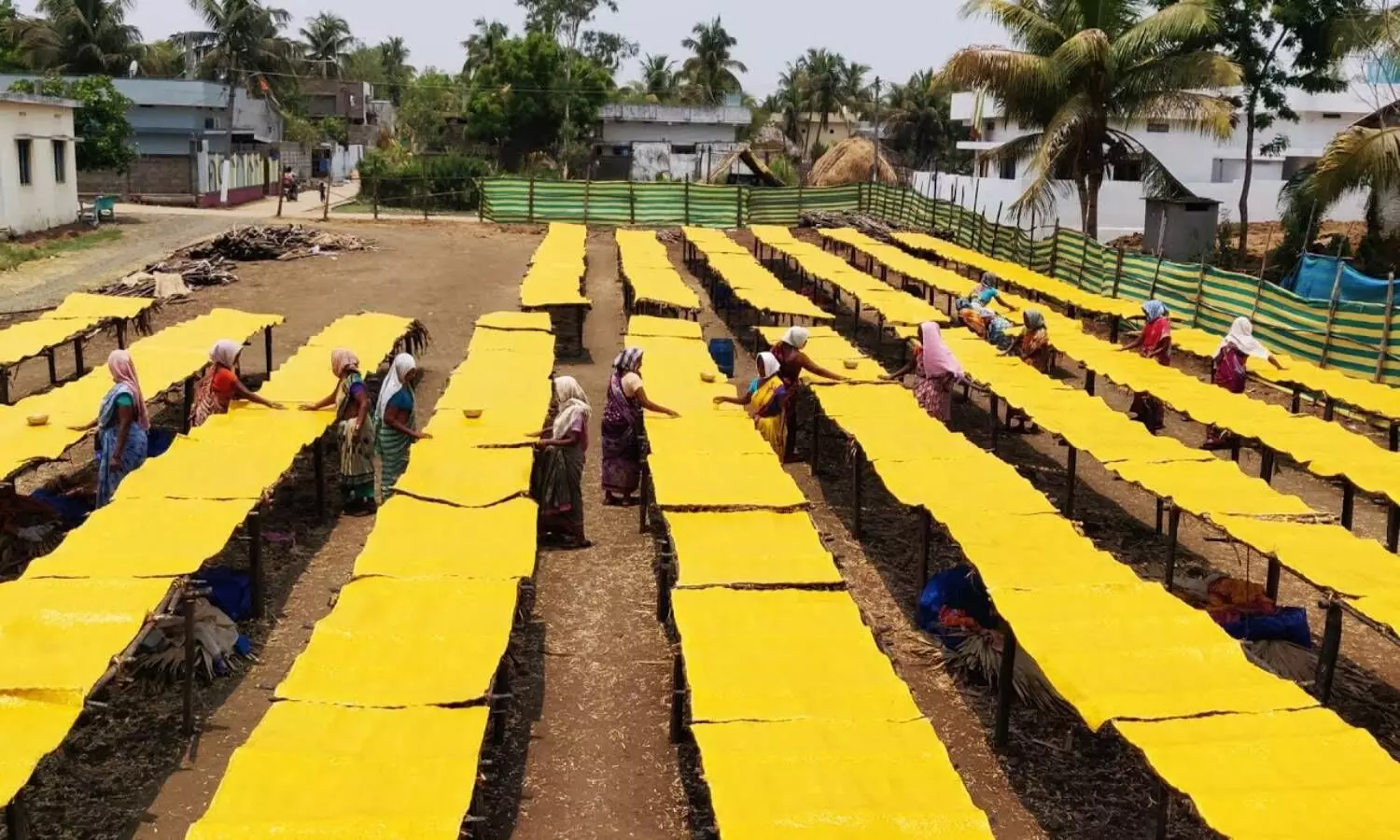`Tooty fruity fresh and juicy`: Mango jelly production drops by 60% in Andhra
Bheemali village under L Kota Mandal in Vizianagaram district was popular for its ethnic sweet called mango jelly.
By Sumit Jha
Mango jelly production in Andhra Pradesh has declined by around 60 percent. This follows a drop in mango production in parts of the state.
Bheemali village under L Kota Mandal in Vizianagaram district was popular for its ethnic sweet called mango jelly.
Covid-19 hit the mango jelly makers in 2020 and 2021. The spread of the virus in the rural pockets had led to a shortage of labor, resulting in a decrease in mango jelly products.
Like Banginapalli mangoes of Vizianagaram, Bheemali's mango jelly was very popular for its traditional sweet and aroma. The mango jelly makers in the region didn't use any artificial flavors and sugar. Bheemali's mango jelly gained importance in Andhra Pradesh and neighboring Odisha and Telangana.
G Ramunaidu, a jelly maker at Bheemali, said that they used to produce at least 400 tonnes of mango jelly every summer. "However, the production has been declining for the past few years. This year, the production has declined due to a shortage of mangoes on the account of the low crop. Bheemali region may produce only 100 tonnes of jelly this year," he added.
More than 4,000 people of Bheemali, Alamanda, L Kota, Bhimasingi, and a few other villages are engaged in manufacturing lip-smacking mango jelly from April to June.
"We lost our livelihood in the past due to the Covid-19. We expected some good returns this year, but the low production of the mangoes in many washed away our hopes this year too", said G Raju, a mango jelly maker at Bheemali.
The situation is similar in other parts of Andhra Pradesh. Most of the jelly makers said trade was severely hit over the past few years.
Jelly makers used to purchase the quality mangoes including Collector, Kolam Gova, and Thotapuri from parts of the state. The makers will glue pulp mixed with sugar on the baboo mats till the jelly reaches a three-inch thickness. Later it is dried for at least four weeks.
"We have faced a shortage of mangoes from the first week. The input price of the jelly has increased due to various reasons. We are gradually losing hopes for better returns in our trade, the jelly makers added. It seems to be difficult to continue the trade in the coming years as we are incurring losses only with the increasing input prices," they further added.
Key Points:
The mango jelly-making season came to end
Traders make Rs200 per kg while jelly makers end up getting around Rs100 per kg
Each family in Bheemali invests Rs5 to Rs10 lakh for jelly-making in the summer season.
Jelly makers seek government support to overcome the losses and request to set up cold storage
Mango jelly can preserve up to six months in cold storage
Thick juicy mangoes are used in the jelly production